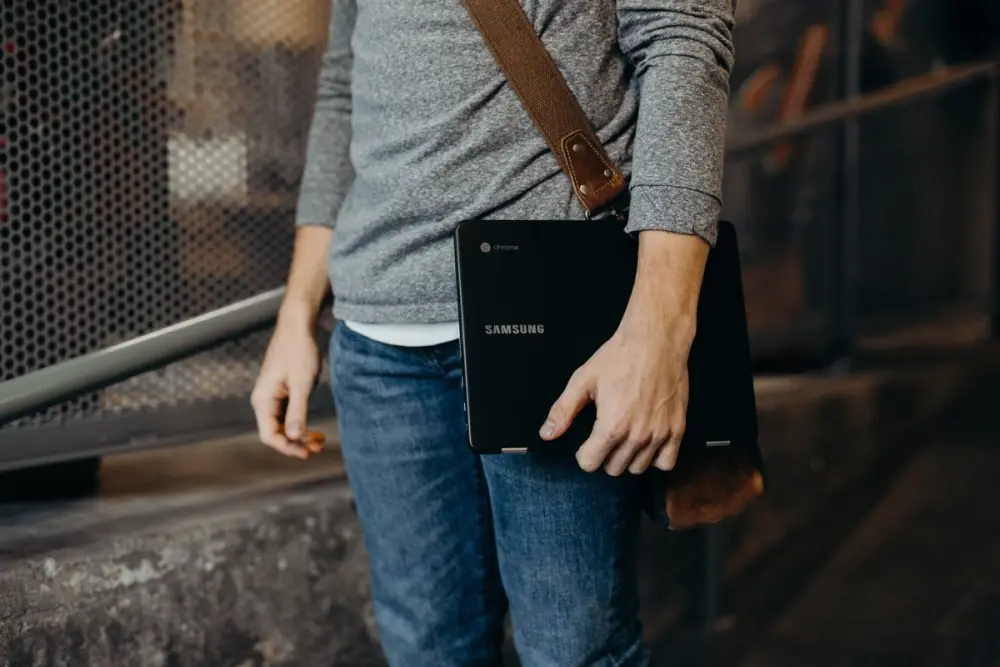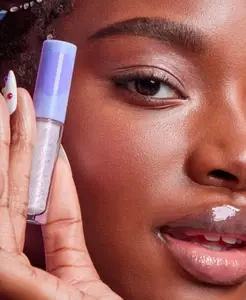Get access to exclusive updates, the latest news and the inside scoop 🍨

How Shopify Stores Utilise Online Google Ads
We are going to provide you with a little insight in regards to how successful Shopify stores utilise online Google ads.
Don't want to read the whole article? 😏Click here for chapters
- Online Google Ads 📢
- Planning for Success with Shopify 📝
- Shopping Campaigns for Shopify Stores
- Marketing Shopify Stores 💻
- Optimised Shopping Campaigns
- Enhanced Ecommerce Tracking 👣
- Audience Targeting
- First Impressions 👀
- Dynamic Search Ads
- Cross-Selling 💰
- Break Free from Budget Caps
- A Multi-Channel Strategy 👏
- A Full-Funnel Strategy
- Get Started with Shopify 🙌

Written by Madeleine
Online Google Ads 📢
When it comes to the world of business there will be many hard pills to swallow along the way, but Shopify brings the pathway to success a lot closer for many merchants who utilise this ecommerce platform.
However, when all is said and done, the most successful Shopify stores on the web don’t just stumble across their fortune overnight. As with many things in life, a triumph naturally follows after the trials and tribulations have passed.
As does any task, Shopify requires the complete dedication and effort of its merchants to have a chance at true success, but we can say with some confidence that once paired with the right tools, Shopify may just be the best thing that will ever happen to your business.
In 2021, Shopify best serves brands of all types and sizes and these establishments have selected this platform as their solution to ecommerce for several reasons.
If we had to highlight a couple of key factors right here and now, we’d put it down to the platform’s frequent updates and supportive community who are ready to lend a hand.
When it comes to Shopify’s usability, this platform wins hands down against its competitors from our perspective, as the solution makes it super simple for merchants to integrate their store with a variety of changeable apps and tools.
Of course, these are just a few examples of what comes to mind when we think about Shopify, but its capabilities are unmatched and go way beyond just these basic features alone.
However, for the merchants that are already utilising Shopify’s armoury of tools and applications, just one question remains - how can you get an online store in front of as many customers as possible?
For those of you who haven’t heard, the combination of Shopify and Google ads is truly a match made in heaven when managed sufficiently.
So, for today’s article, we are going to provide you with a little insight in regards to how successful Shopify stores utilise online Google ads so that you can begin to do the same with your business.
Planning for Success with Shopify 📝
Given the relative ease that merchants can begin to market their Shopify store, it can be easy to forget that a well-thought-out strategy and detailed plan are both essential to the success of any online business.
Having a strategy is without a doubt the most important step that any merchant should take, as, without a plan, a business will soon suffer the consequences because it'll be difficult to analyse what’s working and what isn’t.
So, now we’re coming full circle as this is just as relevant when it comes to driving highly qualified traffic from online Google ads to an ecommerce store.
Shopping Campaigns for Shopify Stores
If you’re new to combining Google ads with Shopify the best place to start is with shopping ads. The process for shopping ads is quick, easy and only requires merchants to walk through a couple of steps that can be easily completed from within the Shopify interface itself.
Once inside Shopify’s Google channel, merchants will be able to synchronise all of their store’s products, automatically pushing each item into the Google Merchant Center. As a result, Google Smart Shopping campaigns can then be created with ease.
For the store owners that do not currently own a Merchant Center account, you’ll need to get one, but don’t sweat! An account can be easily created via Google within a couple of minutes.
Another key element that successful Shopify stores utilise when running Shopping campaigns for their business lies with the optimisation of their site’s product feed to ensure that all product descriptions listed within Shopify are as accurate and as keyword-rich as possible.
Note:We’d recommend synchronising any existing discounts on your Shopify store with Google ads so that once the campaign is set up and running, Google will simply use its automation and machine learning to optimise and display correct prices and product information in search results.
Marketing Shopify Stores 💻
Marketing Shopify stores with Google ads are also a great way to get started with Facebook ads, as this tool allows merchants to run Google Smart Shopping campaigns and Facebook ads natively whilst tracking the results directly from within Shopify's ranks.
Note:While this is a great place to start, we’d strongly encourage all of you to take the time to explore these channels directly for an in-depth understanding of how each platform operates when it comes to running online ads. Additionally, merchants will be able to fine-tune their ad content and optimise their campaigns to leverage further advanced targeting features to benefit their business.
Optimised Shopping Campaigns
After a Shopify store’s products have been synchronised with Google, the search engine will add each item into a single ad group by default.
However, we’d advise taking the time to review the product list extensively and be sure to only advertise the items that are likely to generate a positive ROI for your business.
Everything else should be isolated in a separate ad group with a low priority tag attached, or simply excluded from the strategy altogether.
Enhanced Ecommerce Tracking 👣
If you are already relying on Google Analytics to be your store’s main analytics platform, you will be excited to hear that merchants can leverage Enhanced Ecommerce tracking to automatically create audience segments based upon your store’s customer journey and the interaction that visitors have with your site.
In short, taking advantage of enhanced ecommerce tracking as a tool will grab the cart and checkout abandoners and place these users into segments.
Then these users will be deployed as audiences with online Google ads to create upcoming campaigns that will be designed to target these browsers with compelling ads and offers.
Audience Targeting
With all of a brand’s marketing activity now in place, merchants should now be able to make use of the platform’s testing features which means that store owners can innovate and experiment whilst being proactive in responding to changes and fluctuations in the market.
It is for this very reason that we’d recommend making audience targeting one of the priorities in your store’s strategy when running online Google ads.
See, Google’s focus on the user and audience groups has grown exponentially in the past few years. Therefore, understanding your brand’s customers should always be at the forefront of your thoughts. After all, these individuals are keeping your store in business.
Note:Did you know that Google allows merchants to test out how different segments respond to your ads by setting audience targeting and adding them in observation mode?
The latter is a great way to get to know more about your new and existing customers. Additionally, store owners can test and execute different layers of audience targeting to reap better results for their business.
For instance, many successful Shopify stores take advantage of affinity audiences as a method to scout for users based on their interests, or in-market audiences to target warm leads and users who are ready to make a purchase.
First Impressions 👀
Take our advice and never underestimate or downplay the importance of running ads. In life, it’s often the first impression that matters the most and the impressions that online Google ads generate are no exception to this rule.
Rushed, poor ad copy and creative won’t help your business to cut through the digital noise. However, it may result in a missed opportunity to show potential customers that your brand is the better option when browsing for products across the web.
If you want our advance, we’d suggest ensuring that your brand’s big selling points such as free shipping and returns are clear and easy for website visitors to understand.
Additionally, it will go a long way if your online Google ads are enhanced with a campaign landing page that has been optimised for conversions.
Note:Shopify provides several ways in which merchants can begin to create landing pages for their ecommerce store(s), including the use of external tools and page builder apps via the Shopify App Store.
Dynamic Search Ads
Over the past few years, Google’s machine learning has made a giant leap forward and the performance of Dynamic Search ads. So, much so that they’re often employed by successful Shopify stores when marketing their business and its products.
Combine that with the fact it’s now nearly impossible to predict and cover all the possible terms and phrases that consumers might use to search and find goods, Dynamic Search ads are quickly becoming one of the last few secret tools in the search expert's kit.
If you haven’t heard of Dynamic Search ads before, it might interest you to know that they can be particularly useful for Shopify merchants who have large inventory stores, as these ads can help to clean up on the long tail and drive cost-efficient incremental sales that businesses are otherwise likely to miss - handy right?
Cross-Selling 💰
We get it, selling can be a challenge so merchants are often quite content to be able to just close the deal and move on to the next customer.
However, we here at Karmoon believe that it would be a great deal more effective to increase your current customers’ lifetime value (LTV) and offer loyal consumers the opportunity to buy more from your business. Sounds good, doesn't it?
So, to make this trail of thought turn into a reality, our best piece of advice to you is to stop thinking about retargeting your business ads as a way to just engage with your brand’s current unconverted website visitors and believe in the potential of your customer lists.
Luckily, this is an easy task for many Shopify merchants to implement into their ecommerce strategy. From the Shopify interface, simply head to the Customers section and find the left-hand side menu.
From there, merchants can choose to export all of their customers and modify the downloaded file to make it fit the format that is required to upload the content onto Google.
Then, head to the Audience Manager section within the Shared Library under Tools in Google ads and proceed with the upload, by following the prompts.
Once complete, your customer list will be ready to go, allowing you to target and suppress the users that Google can match. Then, your store’s online Google ads will work to create lookalike audiences that are similar to that of your online store.
Break Free from Budget Caps
Whatever you do, don’t let your success be limited by budget caps. Instead, allow your marketing to be guided by its profitability and ultimately work in favour of your store’s target ROI.
Many marketers and brands unknowingly limit their chances to grow their business by allocating fixed budgets.
Think about it - if spending $1 on Google Shopping is returning $5 or $6 to your store after taking off the cost of the goods and marketing expenditures, why wouldn’t you want to increase the investment?
A Multi-Channel Strategy 👏
Google ads can open up a Shopify store to the big wide world of reaching users who are actively searching the products that your business is selling, presenting store owners with the opportunity to engage with users via the right message at the right time.
However, if you want to take things to the next level and elevate your store’s campaigns, why not consider a multi-channel strategy? For instance, store owners could create prospecting campaigns on Facebook by creating target audiences based upon; demographics, interests, consumer behaviours or custom lists.
Then, all that’s left to do is to retarget those that have expressed a strong interest in your store’s products who haven’t yet converted through your store's Google ads.
Equally, Facebook and Instagram ads can be utilised to retarget those users who have visited your store after clicking in from one of your brand’s active online Google ads.
A Full-Funnel Strategy
While it might be easier for some ecommerce marketers to focus on bottom-of-the-funnel campaigns for targeting; sales, revenue and ROI for their business, it is important to remember that Google ads can offer much more than just Shopping and Search ads alone.
Therefore, the same interface also offers advertisers the capability to create ads and campaigns that have the potential to generate awareness and consideration for online stores such as placing online ads via; YouTube, Gmail or the Discovery feed.
After all is said and done, the key thing to remember here is that all businesses are different. Therefore, what works for some successful Shopify stores on the web may not necessarily work as well for your business.
However, if you’re serious about the future of your online store we’d recommend getting yourself acquainted with online Google ads if you haven’t already, as this will help you to better understand what triggers your target audience alongside how to leverage ads and campaigns to achieve your brand's target objectives.
At the end of the day, it’s your business and the reality of its success will lie with you. So, put in the hard work now and get to know the platform to reap the rewards of online Google ads later.
Get Started with Shopify 🙌
Think you're ready to start selling with Shopify? Sign up for a 14-day free trial with the platform here.
That concludes today’s article on how successful Shopify stores are utilising online Google ads. We hope that you have found our guide useful.
If you’re actively looking to work with a Shopify agency designer or developer to assist you with your business, we’d love to hear from you. Get in touch to get started!
Get Started with Shopify
Looking to get started with Shopify? Take advantage of Shopify's 14-day free trial, no credit card is required.
If you're actively looking to work with a Shopify agency designer or developer to assist you with your business, we'd love to hear from you. Get in touch to get started!
Want to read some more?
Have a look over more posts related to this one















